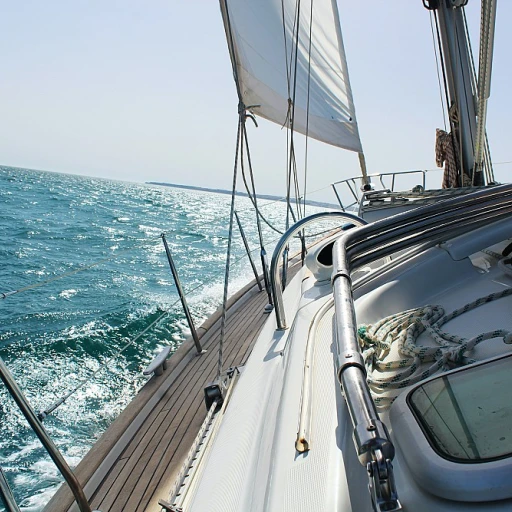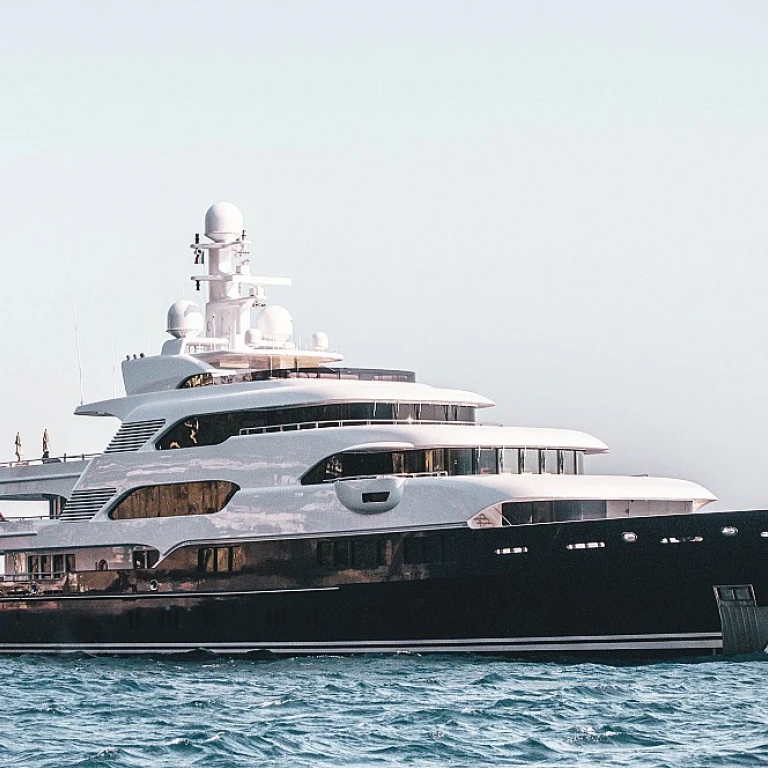Understanding Boomvang Systems
Unraveling the Complexities of Boomvang Systems
In the realm of modern yachting, understanding the intricacies of boomvang systems is essential for aficionados. A boomvang, often referred to also as a vang, plays a pivotal role in the performance of a sailboat. This system is unique in its functionality as it contributes significantly to the mast-boom dynamics, offering enhanced control over sail shape and ensuring optimal sailing efficiency.
Boomvangs essentially operate by exerting vertical force on the boom, allowing sailors to adjust the tension of the sail, which is crucial for maximizing wind efficacy. The best assets of a boomvang are highlighted when sailing in varying wind conditions, ensuring you maintain the best sail shape amidst gusts and lulls.
A thorough understanding of this system can undeniably elevate your overall sailing experience. Knowledge about components such as the cam cleat, fiddle block, and topping lift is imperative as these parts are vital for the seamless operation of the vang.
For those looking to delve deeper into the yacht's hardware, comprehending the boat wiring diagrams can offer insights into intricacies such as the boomvang system.
Explore the details to further enhance your knowledge of yacht systems.
Stay informed and make confident decisions about your yacht's rigging by participating in forums, reading top posts, and even writing a review to share your experiences with others. This not only builds community but also fosters the continuous improvement of boomvang technology.
Technological Advancements in Boomvang Systems
Technological Innovations in Yacht Boomvang Systems
The advancing technology in boomvang systems has significantly revolutionized yachting, enhancing both performance and efficiency. Modern boomvangs are not just about adjusting the boom; they are intricate systems that integrate multiple mechanisms working in sync, ensuring optimal sail shape and improved boat handling.
One notable advancement is the application of modern hydraulic technology, which has shifted from manual to more automated processes. This transition allows sailors to make precise adjustments even under challenging sea conditions, reducing the physical strain often associated with manual systems. The use of hydraulic power integrates seamlessly with other sail control systems, streamlining the operation and allowing for quicker and more efficient sail trimming.
Moreover, material innovations have played a crucial role. The introduction of lightweight and durable materials such as carbon fiber has reduced weight at the mast, boosting overall boat performance. These materials enhance the boomvang's ability to withstand the high loads exerted during strong winds, maintaining sail shape without compromising structural integrity.
Digitalization also marks a significant leap in boomvang technology. Systems now incorporate sensors and smart technology to provide real-time data on sail position and tension. This data is invaluable for adjusting sailing strategies and optimizing performance. This aspect ties into the broader context of "smart sailing," where interconnected systems offer unprecedented control and insights into sailing dynamics.
While these advancements present substantial benefits, they also introduce complexity. Sailors must familiarize themselves with these systems to exploit their advantages fully, as they are integrated with other yacht technologies, contributing to smoother and more proactive sailing experiences.
For those interested in further enhancing their yacht's performance with hydraulic systems, replacing the hydraulic power lift cylinder on components like the kicker motor can be a valuable upgrade.
Discover more about upgrading hydraulic systems.
Maximizing Yacht Performance with Boomvang Systems
When delving into yacht performance, the role of boomvang systems is pivotal. These systems play a critical part in optimizing the sailboat's dynamics, especially in the interaction between the mast and the boom. By effectively managing the angle and position of the sail, boomvangs significantly enhance speed and maneuverability, beneficial to both casual sailors and competitive yachting enthusiasts.
The boom vang, often referred to as a vang, acts as an essential tool for trimming. It prevents the boom from lifting under heavy winds, thus maintaining the sail's shape and increasing the efficiency of the wind flow. This allows yachts to harness the wind power effectively, providing an upper hand in sailing conditions where every knot of speed matters.
One of the technological advancements in this domain is the integration of hydraulic and gas systems that offer automatic adjustments based on the sailing conditions. Whether cruising at sea or engaging in a race, the modern vang systems adjust dynamically, providing that critical edge in maintaining optimal sail tension. Where older systems relied predominantly on manual adjustments, today's configurations can include electronic sensors and controls that respond to changes instantaneously.
These enhancements aren’t just theoretical; the evidence is clear in practice. As yacht posts and forums often highlight the benefits observed in recent oil gas market engagements, mastering the boomvang correlates with improved tactical capabilities and overall yacht agility. By leveraging adaptable vang systems, yacht enthusiasts can experience more responsive builds, whether navigating the east breaks or testing their skills offshore.
In conclusion, the adaptation of these systems brings about not only improved speed and handling but also contributes to a more energy-efficient sailing experience. As sailboats become more streamlined with sophisticated boomvang setups, they promise a sailing experience that aligns with contemporary yachting trends, energizing the yachting community with the seamless blend of traditional sailing with modern innovation. For further insights into enhancing yacht performance, such as through the potential use of new diesel outboard technologies,
explore this resource.
Challenges in Implementing Boomvang Systems
Navigating Implementation Challenges for Boomvang Systems
When it comes to integrating boomvang systems on modern yachts, several challenges can arise. This section delves into the intricacies associated with adopting these crucial components into a yacht's framework.
First and foremost, the physical installation process can be demanding. Attaching a vang to the mast base or integrating it with the nansen boom can become complex, requiring precise alignment and strong connection points. The use of components like fiddlestick and cam cleat demands meticulous attention to detail to ensure functionality.
Additionally, there's the challenge of harmonizing boomvang systems with existing sails and other periphery systems on the yacht. These systems need to operate seamlessly with elements like the topping lift and mast boom to prevent any hinderance in overall yacht performance.
Navigating material compatibility is another hurdle. The choice between materials ranging from the oil-resistant black pipeline to white components affects not just the performance but also the aesthetic appeal of the yacht. Selecting the right materials is crucial since they must withstand the yacht's exposure to oil, sea, and sunlight.
Moreover, adopting new technology might face resistance from crew members more accustomed to traditional sailing methods. Training and experience play a significant role here, with forums often serving as valuable resources for yacht enthusiasts looking to gain insights from top posts and user reviews.
In the case of energy management, balancing the power requirements—especially when integrating with systems provided by energy groups like rci energy—demands careful planning. A privacy policy needs to be respected when collecting data that might impact performance analysis.
Ultimately, effective implementation relies on understanding these challenges and approaching the integration of boomvang systems with a meticulous strategy, paving the way for smoother sailing and enhanced performance.
Boomvang Systems and Safety Considerations
Sailing Safely with Boomvang Systems
When implementing boomvang systems, understanding their impact on safety is essential for any yacht enthusiast. Boomvang systems significantly contribute to maintaining control and stability of the sailboat, especially in turbulent sea conditions.
One key safety feature is the ability of the boomvang to prevent "boom bounce," a phenomenon wherein the boom oscillates with the force of the wind, causing unpredictable shifts and potential hazards. When a boomvang is correctly adjusted, it can materially reduce such movements, ensuring smoother sailing experiences.
For those interested in performance, these systems help in achieving optimal sail shape, contributing not only to speed but also to safer operations. A well-tuned boom vang secures the sail into an optimal position, whether cruising or racing, allowing for better maneuverability around obstacles like the "east breaks." This, in turn, minimizes the chances of accidental jibes, which can be dangerous if not properly managed.
Safety in yacht technology is influenced by the design and materials used in systems. Opt for equipment, such as cam cleat and fiddle block, that meet high industry standards. Adoption of advanced materials, which are more durable and resilient against the harsh marine environment, can improve the system's longevity and efficacy, reducing the risk of failure at sea.
Moreover, the boomvang may also include integrated "topping lift" and "mast base" attachments that further secure the boom, offering an additional layer of protection. As the practice of sailing continuously evolves, the privacy policy of sailing forums suggests sharing experiences and reviewing systems to improve team and individual knowledge on boomvang utilization.
As yacht owners and sailors become more conscious of safety, the trust placed in boomvang systems continues to expand. As such, it's vital for users to understand their yacht’s "user agreement" and maintenance requirements of these systems to maintain both their investment and safety aboard the vessel.
Future Trends in Boomvang Technology
Emerging Trends and Innovations
The realm of boomvang technology is witnessing an influx of innovations that promise to elevate yacht handling to new heights. As yachting enthusiasts, it is crucial to stay informed about these future trends.
One significant trend is the integration of advanced materials and manufacturing techniques. The use of lightweight composites, such as carbon fiber, is making boomvang systems more efficient. This not only enhances performance but also offers a streamlined appearance, aligning with the sleek aesthetics demanded by modern yachters.
Smarter systems are also on the horizon. Digital integration, like connecting the boomvang systems to onboard computers, allows for real-time adjustments. These intelligent systems can automatically respond to changing sailing conditions, offering unparalleled responsiveness. Mariners can focus more on strategic navigation while their systems optimize sail shape and tension in the background.
Hydraulic advancements, a topic of great interest in boating forums, are also being explored. Systems that combine traditional mechanical setups with hydraulics are emerging as a promising area. These hybrid systems provide an agile response while maintaining the reliability of conventional mechanical parts. Sailors can expect a smoother interaction, reducing the load on lines and hardware, such as the cam cleat and fiddle block.
Given the increasing interest in sustainable energy, the industry is also examining the potential of harnessing solar and wind energy. This echoes the efforts in energy sectors like oil and gas to transition towards greener solutions. Harnessing renewable energy could power auxiliary systems on a yacht, reducing dependence on traditional energy sources while at sea.
Lastly, the adoption of IoT technology and smart analytics is a burgeoning field. By collecting data from multiple sailing sessions, this technology can offer predictive insights, helping sailors to plan their voyages more effectively. This data-driven approach promises enhanced privacy policy controls, as users can choose what information to share.
For yacht enthusiasts looking to stay ahead, keeping an eye on these emerging trends can lead to a more efficient and enjoyable sailing experience. As these innovations continue to evolve, yachting enters a thrilling new era where technology harmoniously blends with the timeless joy of sailing.

